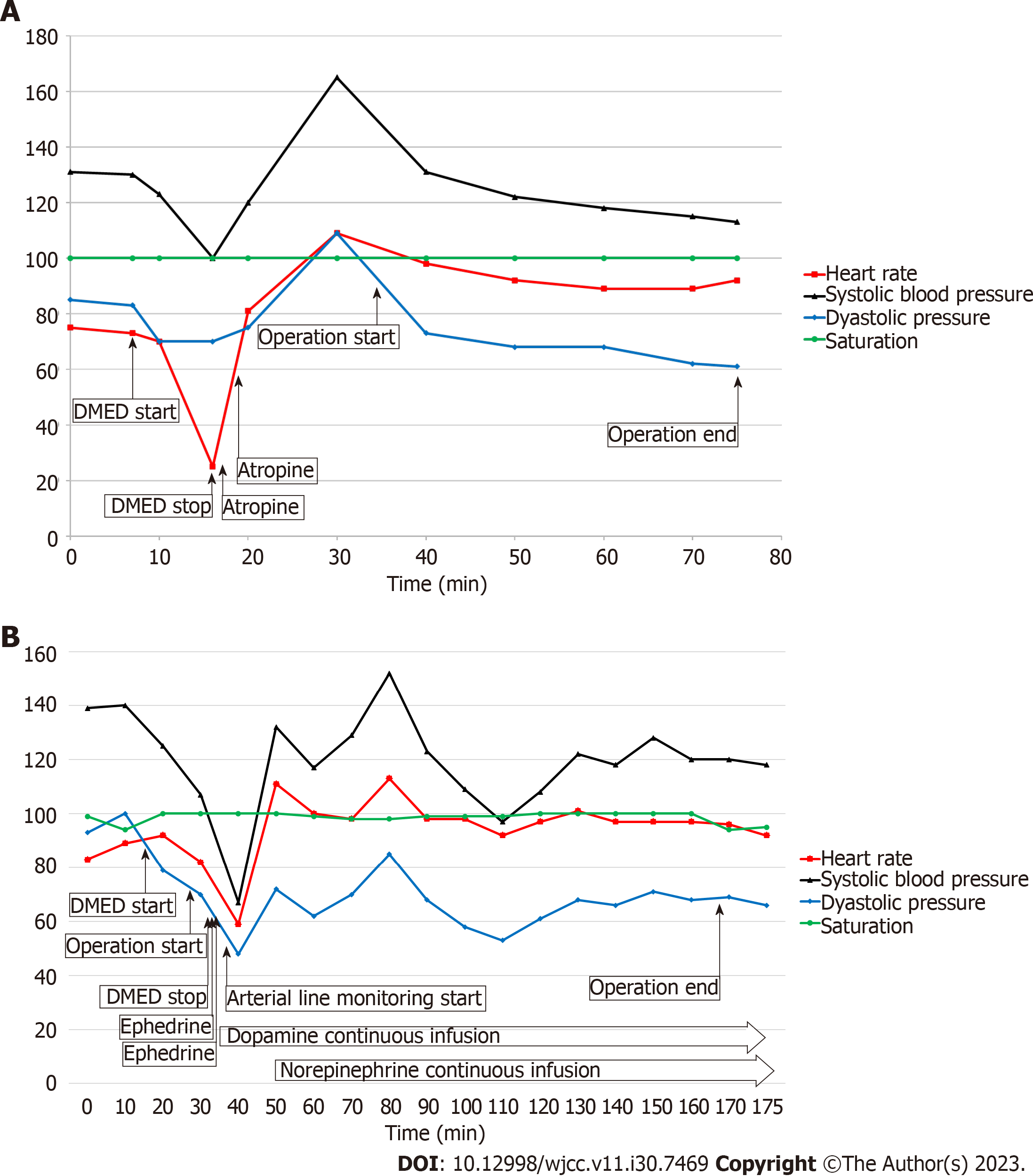Copyright
©The Author(s) 2023.
World J Clin Cases. Oct 26, 2023; 11(30): 7469-7474
Published online Oct 26, 2023. doi: 10.12998/wjcc.v11.i30.7469
Published online Oct 26, 2023. doi: 10.12998/wjcc.v11.i30.7469
Figure 1 Vital signs of the cases 1 and 2.
A: Case 1: The heart rate abruptly decreased from 75 to 25 bpm during administration of the initial loading dose of dexmedetomidine (DMED). DMED administration was halted immediately, and after receiving a second dose of atropine, the heart rate recovered to 105 bpm, and blood pressure (BP) increased; B: Case 2: Half of the recommended loading dose of DMED was administered due to the underlying heart dysfunction. Immediately after receiving the loading dose, the heart rate and BP abruptly dropped. Decreased BP was maintained despite the intravenous administration of ephedrine. After invasive arterial BP monitoring was applied, a continuous infusion of dopamine and norepinephrine was started. The vital signs were maintained within the normal range with continuous infusion of dopamine and norepinephrine. Inotropic and vasopressor support was required for over 6 h after the initial loading dose of DMED. DMED: Dexmedetomidine.
- Citation: Kim YS, Lee C, Oh J, Nam S, Doo AR. Hemodynamic instability following intravenous dexmedetomidine infusion for sedation under brachial plexus block: Two case reports. World J Clin Cases 2023; 11(30): 7469-7474
- URL: https://www.wjgnet.com/2307-8960/full/v11/i30/7469.htm
- DOI: https://dx.doi.org/10.12998/wjcc.v11.i30.7469









